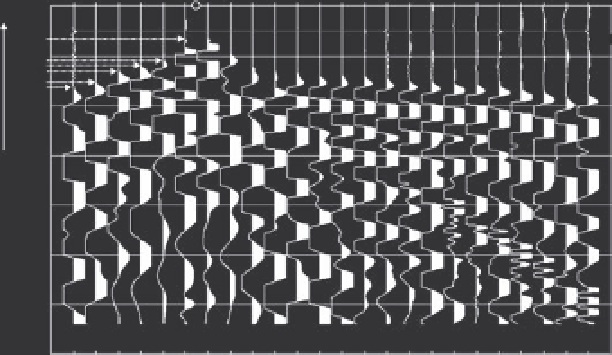Geology Reference
In-Depth Information
coverage is being obtained, on a system in which the long-shot location for
one spread is a short- or centre-shot location for the next. If explosives are
being used, it may be worth using very long offsets if these will allow firing
in water (see Section 11.2.3).
13.1.5 Centre shots
The information provided by a conventional four-shot pattern may be sup-
plemented by a centre shot. Centre shots are especially useful if there are
considerable differences in interpretation at opposite ends of the spread, and
especially if these seem to imply different numbers of refractors. They may
make it possible to obtain a more reliable estimate of the velocity along an
intermediate refractor or to monitor the thinning of an intermediate layer
that is hidden, at one end of the spread, by refractions from greater depths.
An additional reliable depth estimate is obtained that does not depend on
assumptions about the ways in which the thicknesses of the various layers
vary along the spread, and there will be extra data on the direct wave velocity.
With long spreads, other shot positions may be occupied and are especially
useful where, as in the example in Figure 13.2, there are rapid changes
in subsurface conditions in a particular area (see discussion in caption to
Figure 13.3).
0 2 4 6 8 10121416182022242628303234363840424446
-10
SP
Trigger
10
30
50
70
90
110
130
Figure 13.2
Twenty-four-channel refraction record, with geophones spaced
at 2 m intervals and the shot fired at a shot point (SP) between geophones
6 and 7. Manual first-break 'picks' at the start of a negative (right-going)
pulse are identified by arrows, for the first six geophones only. This record
would be considered good, and much more difficult decisions usually have
to be made.


